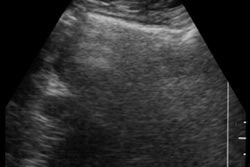(Ultrasound Review) An article in the December 2000 issue of the American Journal of Roentgenology investigated the diagnostic potential and limitations of contrast-enhanced color Doppler ultrasound for benign and malignant breast tumors.
Radiologists at Witten-Herdecke University in Germany examined 84 breast lesions in 77 women before and after ultrasound contrast administration. Included in this prospective study were 25 women previously treated for breast carcinoma with 28 recurrent lesions.
The ultrasound features used to evaluate lesions included the following:
- Degree of enhancement.
- Number of tumor vessels.
- Time to maximum enhancement.
- Pattern of vascular morphology and course.
Tumor size ranged from 0.5 cm to 3 cm, and surgical intervention was planned based on physical examination or mammography. Ultrasound was performed the day prior to surgery using a 5–10 MHz linear-array transducer. Color Doppler parameters were adjusted for low-flow sensitivity (scale 0.02 m/sec, gain 65%) and transducer pressure was minimal to avoid compressing small vessels.
Levovist, an ultrasound contrast agent consisting of galactose palmitic acid-coated microbubbles, was administered as a 4-g bolus of 300 mg/mL over 15 seconds. Fifty-three lesions were histopathologically proven cancers, and 31 were benign tumors.
Pathologic studies have shown that vessels in malignant tumors vary in size, have an irregular course, and form sinusoids and arteriovenous shunts. In benign tumors, vessels are similar in size, monomorphic, and may be peripherally situated.
Therefore, the color Doppler features used in this study to identify malignant lesions included irregularly configured vessels varying in size, occasionally fusing in color grading to pools, or irregularly running vessels that approach or penetrate the tumor."
It was this distinct vascular morphology and course that enabled the best sensitivity (90%) and specificity (81%) in differentiating benign and malignant breast lesions.
After Levovist was injected, color Doppler identified a great number of vessels that enhanced more quickly in malignant lesions compared with benign. However, there was a partial overlap.
The researchers' conclusion was that "although administration of the contrast agent clearly improved evaluation of benign features on Doppler sonography, absolute certainty cannot be achieved. The feasibility of making an otherwise difficult distinction between a scar and tumor recurrence on sonography and mammography appears to be promising, but further studies are necessary."
"Tumor vascularity of breast lesions: potentials and limits of contrast-enhanced Doppler sonography"
Markus Stuhrmann et al
Radiologische Gemeinschaftspraxis, Alter Markt 10, D 42275 Wuppertal, Germany
AJR 2000; 175: 1585–1589
By Ultrasound Review
January 23, 2001
Click here to post your comments about this story. Please include the headline of the article in your message.
Copyright © 2001 AuntMinnie.com



















